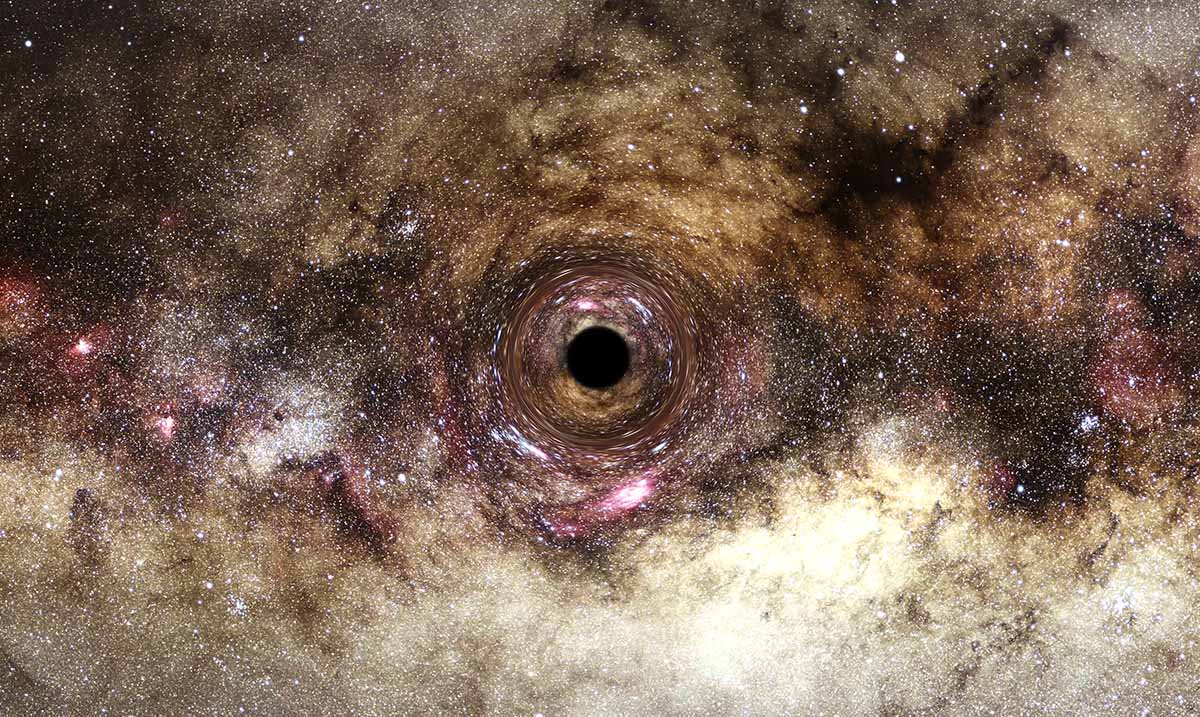A groundbreaking discovery has been made in the field of astronomy with the identification of the largest known black hole to date. This colossal black hole, which is estimated to have a mass 34 billion times that of our Sun, was discovered through the phenomenon of gravitational lensing. This discovery provides valuable insights into the formation and evolution of black holes, as well as the overall structure of the universe.
Gravitational Lensing: A Window into the Cosmos:
Gravitational lensing is a phenomenon that occurs when the gravity of a massive object, such as a black hole or a galaxy, bends the path of light from a more distant object behind it. This effect can create multiple, distorted images of the background object, enabling astronomers to detect otherwise invisible celestial bodies.
The discovery of the largest known black hole was made possible by the meticulous analysis of gravitational lensing data, which provided a unique window into the distant cosmos. By observing and interpreting these gravitational effects, scientists were able to pinpoint the location and estimate the mass of this enormous black hole.
The Largest Black Hole Ever Discovered:
The black hole, located in a galaxy known as TON 618, is a quasar – an extremely bright celestial object powered by the accretion of mass onto a supermassive black hole. With a mass estimated to be 34 billion times that of the Sun, this black hole dwarfs the previous record-holder, which was approximately 18 billion solar masses.
The sheer size of this black hole raises intriguing questions about its formation and the conditions that allowed it to grow to such an immense scale. Researchers believe that the black hole may have formed relatively early in the universe’s history, during a period of rapid growth and evolution.
Implications and Future Research:
The discovery of the largest known black hole has several significant implications for our understanding of the cosmos. It challenges existing theories on black hole formation and growth, prompting scientists to reevaluate their models and assumptions. Furthermore, the discovery demonstrates the immense potential of gravitational lensing as a tool for uncovering hidden celestial objects and expanding our knowledge of the universe.
Future research will continue to explore the properties of this gargantuan black hole and the environment in which it formed. Additionally, ongoing efforts to refine gravitational lensing techniques will likely lead to the discovery of more hidden celestial objects, providing invaluable insights into the nature of the universe and its myriad mysteries.
The discovery of the largest known black hole through gravitational lensing marks a significant milestone in the field of astronomy. This colossal black hole not only offers a unique opportunity to study the formation and evolution of these enigmatic celestial objects, but also highlights the power of gravitational lensing as a tool for uncovering the hidden wonders of the cosmos. As researchers continue to delve into the mysteries of the universe, discoveries like this one will help to expand our understanding of the cosmic tapestry in which we are woven.

